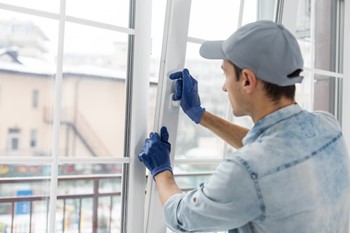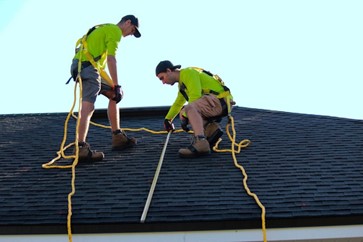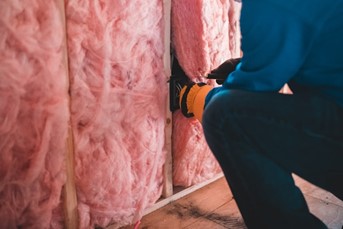
Energy efficiency isn’t just about using less electricity or turning off the lights when you leave a room. A significant portion of wasted energy stems from unseen or overlooked inefficiencies in your home’s structure. Chief among these culprits is poor insulation, which can cause heat to escape during winter and cool air to leak out in the summer. The result? Skyrocketing energy bills and a larger carbon footprint than necessary.
Additionally, old or poorly installed windows are another major source of energy loss, as they can allow drafts and temperature fluctuations to disrupt your home’s climate control. This is where window installers can play a crucial role in improving energy efficiency by replacing outdated windows with newer, more energy-efficient models.
This article delves into the financial and environmental consequences of home energy loss, highlighting how replacing or maintaining key exterior elements can optimize your home's efficiency and keep it in peak condition.
Insulation acts as a barrier between the interior of your home and the external environment. It reduces the transfer of heat in or out, helping to maintain a consistent and comfortable indoor temperature. Without proper insulation, your HVAC system has to work harder to compensate for temperature fluctuations, leading to increased energy use and higher utility bills.
Heating and cooling accounts for nearly half of the energy use in a typical home. Poor insulation means your heating system has to run longer and more frequently in the winter, while your air conditioning works overtime in the summer.
Homeowners with insufficient insulation can spend up to 20% more annually on energy costs. Overworking your system due to poor insulation can lead to more frequent breakdowns and costly repairs. Moreover, potential buyers often view poor insulation as a red flag, leading to lower resale values.
Windows play a critical role in energy efficiency. While they allow natural light to brighten your home, outdated or poorly sealed windows can be significant energy wasters.

Older windows often lack modern energy-saving technologies such as double glazing or low-emissivity (low-E) coatings. Over time, frames may warp, seals can deteriorate, and glass can lose its insulating properties. This leads to:
Replacing old windows with energy-efficient models can significantly reduce heat transfer. Look for windows with the ENERGY STAR label. Features like double or triple glazing, argon gas fills, and low-E coatings can make a noticeable difference in your home’s comfort and energy costs.
A well-maintained roof is crucial for more than just protecting your home from the elements; it plays a vital role in ensuring your home's energy efficiency. An old, damaged, or poorly insulated roof can be a significant source of energy loss, leading to higher utility bills. Roofing contractors can help assess your roof's condition and recommend necessary repairs or replacements to improve its performance.
Heat naturally rises and escapes through the attic, especially if the roof lacks proper insulation. This causes your heating system to work harder to maintain a comfortable temperature. In addition, poor ventilation in the roof can lead to overheating in the summer months, driving up air conditioning costs, and causing potential mold issues. Another issue to consider is leaks and gaps in roofing materials, which allow conditioned air to escape and outdoor air to seep in, compromising your home's temperature control.
Investing in a new roof or maintaining your existing one can provide substantial savings. Modern materials are designed to reflect sunlight, reducing heat absorption and ultimately lowering cooling costs. A well-maintained roof extends the longevity of your home, protecting it from costly repairs down the line.

Not sure if poor insulation, windows, or roofing are causing energy loss? Watch for these signs:
To improve your home’s energy efficiency, contractors recommend upgrading the insulation in areas that lose the most heat, such as the attic, walls, and floors. Effective options like spray foam, fiberglass, and cellulose can make a significant difference.
Next, consider having old windows replaced with energy-efficient models that include proper sealing to prevent heat loss. Maintaining your roof is also crucial—inspect it for leaks, replace any damaged shingles, and ensure your attic insulation is adequate. Having a professional conduct an energy audit can provide a comprehensive assessment of your home’s efficiency and recommend targeted improvements to optimize energy savings.
A quality contractor would recommend that addressing hidden energy wasters goes beyond just saving money in the short term. It is, in fact, a long-term investment in the home’s value, the comfort of its occupants, and the environment. The benefits include:
Poor insulation, old windows, and neglected roofing are often overlooked but costly energy wasters. By addressing these issues, you can significantly reduce your energy bills and environmental impact while creating a more comfortable living space.
Whether you’re replacing outdated windows, upgrading insulation, or investing in a new roof, these improvements are steps toward a more energy-efficient home. As energy costs continue to rise, making these changes now will pay off in the long run—for your wallet and the planet.